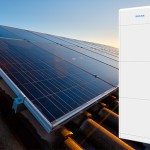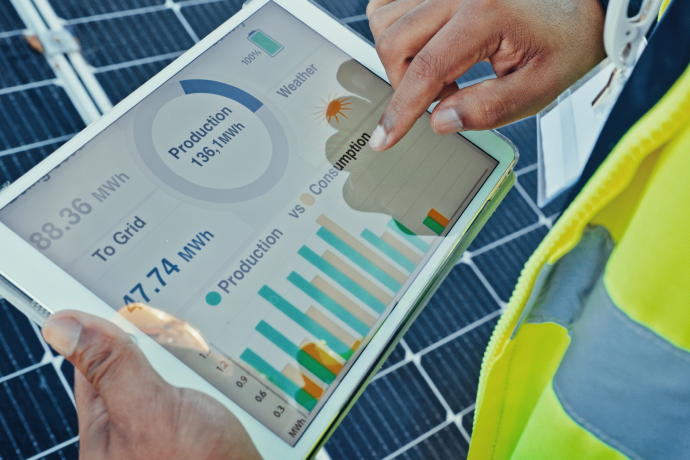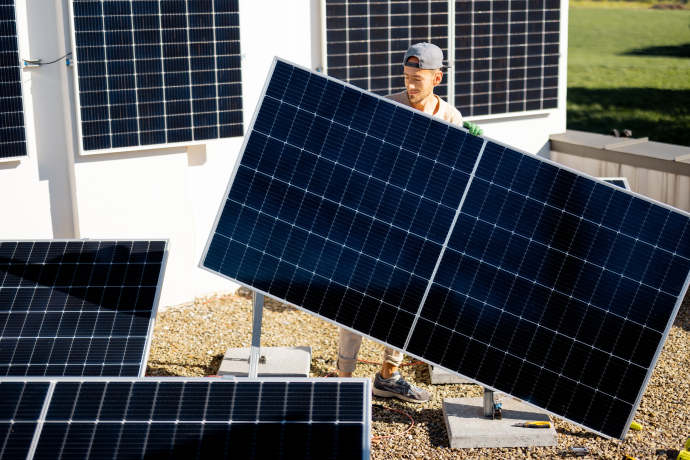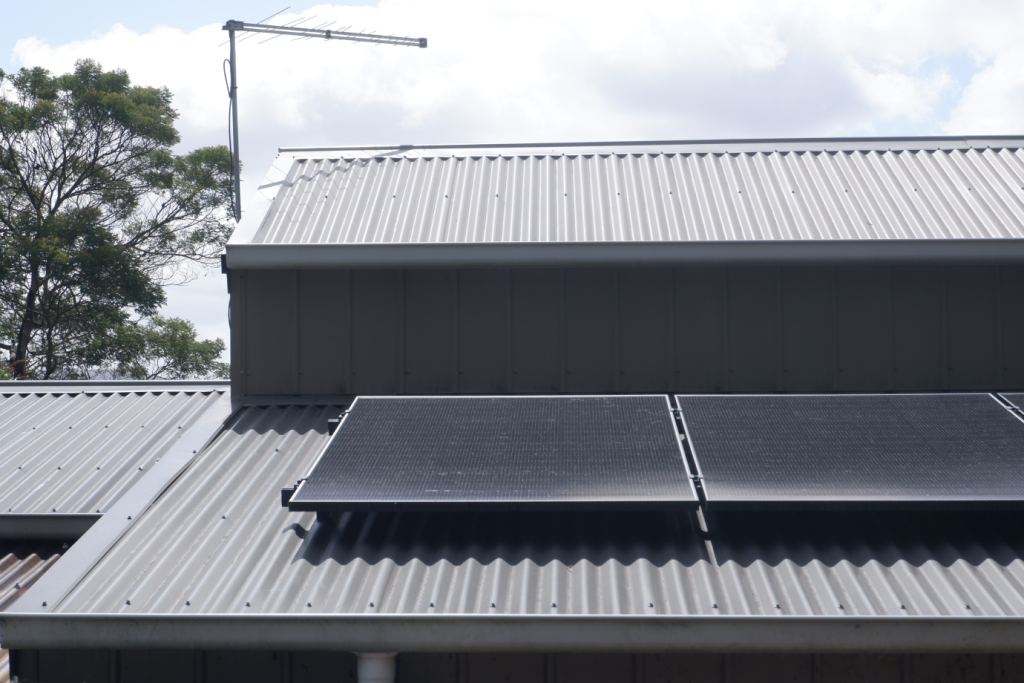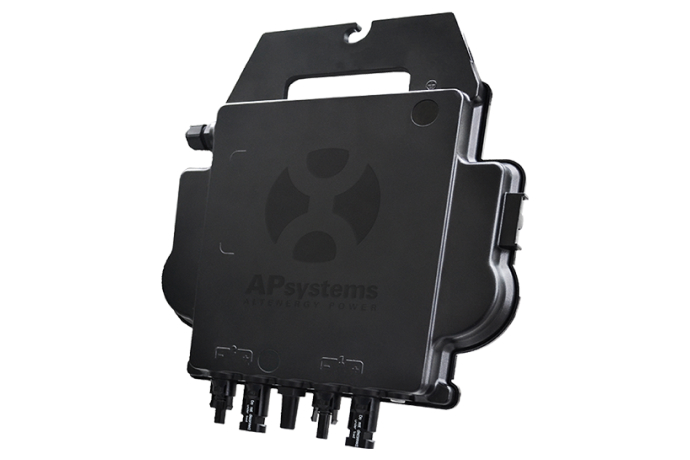Solar batteries are exploding in popularity across Tasmania. Acting as a device to store excess solar energy, it is a practical way to save on bills, reduce your reliance on electricity from the grid, and harness energy during emergency blackouts. The ease of integrating batteries into your household will depend on your current solar system setup. Your inverter capabilities, solar system size and age will all affect how your batteries are installed. Finally, it is important for you to choose the right battery to suit your needs, with associated costs depending on capacity, and your choice of rebate. Overall, batteries can be a great choice for Tasmanians with existing solar systems.
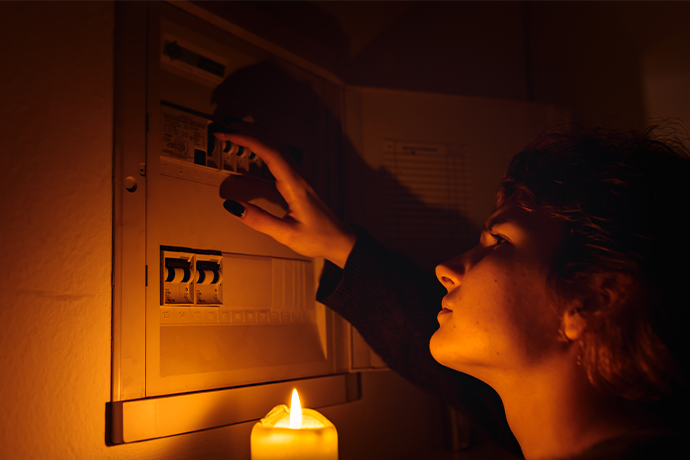
Benefits of Adding a Battery to Your Solar System
A solar battery is an energy storage device that works directly with your solar system. As your solar panels generate energy from the sun during the day, any surplus energy can be sent to charge your battery, which can then be used to power your home. Solar batteries have a range of benefits that make them a valuable addition to your solar system:
- Saving on energy bills – By storing excess solar energy captured by your solar panels for later use, you can reduce your reliance on purchasing electricity from the grid.
- Backup energy – Blackouts or power outages can be frustrating for households without a backup source of power. Installing a battery can allow you to continue powering your home during outages by using its stored solar energy. Importantly, you must install a backup gateway and critical load panel with your solar battery to allow it to power your home during blackout situations.
- Environmental benefits – Adding a solar battery to your home reduces your reliance on electricity, generated from burning fossil fuels. This promotes the use of renewable energy, which is cleaner for the environment, thus reducing your carbon footprint.
- Provides energy at night – Solar panels need sunlight to provide electricity. Therefore, during the night or cloudy days, your solar panels won’t be as effective. Using energy from your solar batteries when the sun isn’t shining is a great solution for offsetting energy losses.
- Noiseless power solution – Solar batteries are typically quiet and not disruptive. This is unlike popular petrol/gas/diesel powered backup generators, which tend to be especially loud. This makes solar batteries a great alternative for the quiet, residential environment.
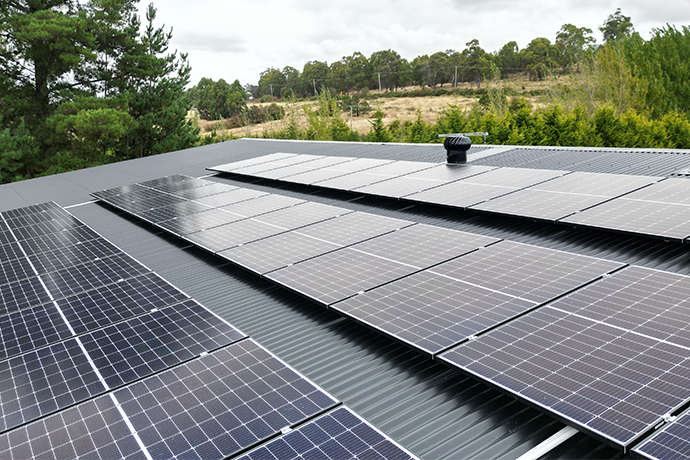
Can Your Current Solar System Support a Battery?
Installing a solar battery within an already existing system is becoming increasingly common, particularly as batteries become more affordable. Most solar systems will be compatible with solar batteries; however, the ease of integration depends upon your system’s design. The suitability of your existing solar system will depend upon the following factors:
Inverter compatibility
Your existing solar inverter plays an important role in determining how suitable your system is for batteries. Because solar panels generate DC (Direct Current) electricity and your home uses AC (Alternating Current), an inverter is necessary to convert between the two. Because solar batteries store energy as DC, a separate inverter is required to convert the AC electricity from the home into DC before it can be stored in the battery.
The majority of existing solar systems are fitted with either a string inverter or microinverters. String inverters convert DC to AC for the entire solar array at once, while microinverters convert power individually at each panel. In either case, you will likely need to replace the inverter or, more commonly and easily, install an additional inverter to connect the battery – allowing you to keep your existing inverters intact.
Ideally, some homeowners may have already planned for solar batteries by installing what’s called a “hybrid inverter,” which manages both your solar panel and battery conversions in one device. This is the ideal inverter situation, with the most straightforward installation process, although less common in existing solar systems.
Solar system size
The size of the solar system will dictate whether a battery is worth it for you. This is because a larger solar system provides more excess energy for a battery to store. Larger solar systems are more practical for battery installations because they generate enough excess energy to effectively charge the battery. Smaller systems may not produce sufficient surplus power, making the investment in a battery much less beneficial.
Currently, if you don’t have a solar system of at least 5 kilowatts (kW), there’s little point in installing a battery, as most residential batteries require at least 5 to 6 kW of solar panel capacity to charge effectively. Furthermore, your system must be 5 kW or larger to be eligible for the federal battery rebate, which can reduce upfront costs by 30% under the Cheaper Home Batteries Program.
Solar system age
Generally, the older your solar system, the less suitable it will be for installing a new battery. Older systems may require more frequent maintenance, and may be prone to breaking down than newer systems, with a longer lifespan. Additionally, older systems may not have the necessary wiring or switchboard capacity to accommodate a new battery, which may require substantial upgrades.
Different Types of Battery Installations
One of the biggest decisions you’ll make when preparing to install a new solar battery is how you want your system to be installed. This will depend largely on whether or not you want to be connected to the grid, or if you want your battery to be useful during a power outage. The following are the different types of battery installations:
- Basic grid-connected battery – The simplest type of battery to install. Designed purely to store the excess solar energy you generate during the day. Your home then draws energy from the battery during peak hours (typically from 4 pm – 9 pm) or when solar panels are generating a low amount of power.
- Grid-Connected Battery With Backup – Provides the same benefits as above, with the added ability to operate during power outages. They will require additional equipment to perform this function, including a backup gateway and a critical loads panel. A backup gateway is used to detect power outages to disconnect your house from the grid if one occurs. It basically acts as a switch, removing you from the grid and switching your home to your battery for energy. You will also need to install a critical loads panel, which is a device that houses the important circuits your battery will prioritise during an outage.
- Off-grid Batteries – Designed for remote areas, off-grid setups are designed to be completely disconnected from the grid and self-sufficient. These are typically purpose built, bespoke systems, with the battery capacity determined by your daily electricity usage and the size of your solar system. It will also typically involve a backup generator to ensure you remain connected to electricity.
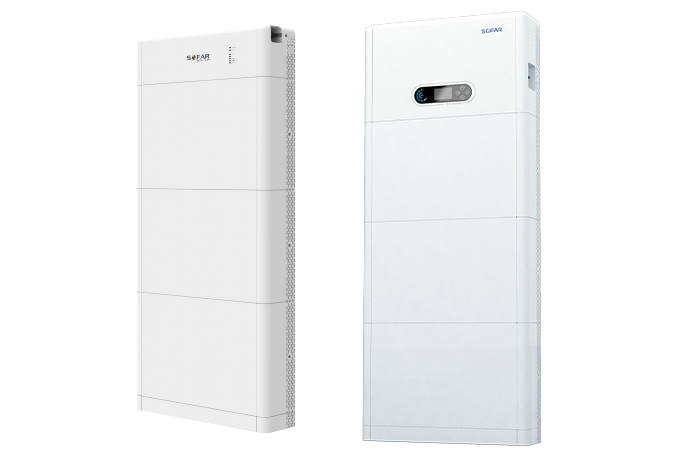
Image credit: Sofar batteries
How to Choose the Right Solar Battery
When deciding which solar battery is right for you, you should consider the following factors:
Battery type
It is important to consider the right battery type for your system. Solar batteries come in four main types:
- Lithium-ion batteries – Most common type of installation, these batteries store energy by using the movement of lithium ions. They’re popular because they can hold a large amount of energy storage within a smaller space. They also have a great expected lifespan (15 years) and generally require less maintenance than other batteries. However, these batteries are the second most expensive of the four types.
- Lead-acid batteries – Previously more common, lead-acid batteries are becoming increasingly rare and dated. Although they can hold a large amount of power, they are generally quite slow to charge, taking up to 14 hours. Although they are the cheapest of the four types, they need to be replaced much more often, and have a lifespan of between 3 to 5 years.
- Nickel-cadmium batteries – These batteries aren’t as popular as lithium-ion because they struggle to hold a large amount of energy for their size. However, they are viewed as an incredibly durable battery that can be super effective in extreme temperatures. These batteries typically last approximately 10-15 years, and are the second cheapest option.
- Flow batteries – The final battery type is also the newest addition to the industry. Flow batteries use a water electrolyte that flows between the two chambers in the battery. Because of their technology, flow batteries are growing in popularity due to their much longer lifespan and suitability for extended, repeated use. Although they are still a new technology and are the most expensive of the four battery types.
Battery capacity
Your choice of capacity is another important determining factor when choosing a battery. The larger your battery size, the more energy and electricity your home can store. When determining the right battery capacity, you should consider your current solar system size. As a general rule, if you have a 6.6kW solar system, you’ll typically need a battery with at least 10kWh of storage capacity – possibly more, depending on the size of your solar system.
Although other circumstances may permit you to increase this size. For instance, if you want to go completely off-grid, then you will need a battery capacity that can store at least two days of energy. Depending on your personal energy use, this could increase your battery capacity required to as high as 15 kWh. If you’re unsure which battery capacity is right for you, then we highly recommend consulting with your solar installer or contacting our team at Tasmanian Safer Solar.
How to Add a Battery to Your Solar System
If you are in the final stages of deciding whether adding a solar battery is right for you, then you will need to consider the different approaches for installation. The following are three ways to add a solar battery to your home, with different approaches based on your system’s capabilities:
Storage-ready solar panel system
In a perfect world, you already knew you wanted to add a battery and planned for this outcome when initially installing your solar system. This is becoming increasingly common for Tasmanians, particularly as the price of solar batteries continues to drop, and the growing integration of rebates and financial incentives. A solar panel system that is ready will already have a hybrid inverter installed, which just needs to be simply configured and connected to the battery itself.
If you don’t have a hybrid inverter installed, then you have two main options:
Option 1: DC-coupled System
A DC-coupled system involves replacing your current solar inverter with a “hybrid” inverter to operate both your battery and panels. In this system, the DC power from your solar panels directly charges your batteries, with the hybrid inverter converting the DC from the battery into AC for your home.
The biggest benefit of this approach is the improved efficiency compared to an AC system (will be explained next), with both the inverter and the battery working seamlessly to ensure a low level of energy is lost during the conversion process. The biggest drawback to this approach is that it requires a more complex system redesign and rewiring, which can result in additional costs, making it more expensive than the AC-coupled system. This is a great choice for anyone who is considering replacing their inverter, and by choosing a hybrid system, you can set yourself up for the future.
Option 2: AC-coupled system
The second option is installing an AC-coupled system. This involves installing a separate inverter for just your battery, while also keeping your existing solar inverter. Within this system, DC power from your solar panels is converted by your existing inverter to AC for your home as usual. The excess AC power is then sent to your battery, with a new inverter converting this energy back to DC to be stored.
Unlike a DC-couple system, this solution does not require extensive redesigns or rewiring and is typically the more affordable option. However, it is slightly less efficient than a DC-coupled system, with the extra steps required to convert electricity from DC to AC resulting in greater energy losses.
Overall, unless you have an already outdated solar inverter you are looking to replace, we typically recommend following the AC-coupled system. This is because it’s the most straightforward, cost-effective solution for adding a new battery to an existing system, eliminating the need for extensive rewiring.
Important Considerations Before Installing a Solar Battery
When adding a new battery to your existing system, it is important to be aware of other considerations:
Physical space
Batteries come in various sizes, so it’s vital to consider the physical space you have available. Solar batteries typically occupy several square metres, with heights ranging from 65 cm to 120 cm, widths from 45 cm to 85 cm, and depths from 12 cm to 30 cm, depending on the battery’s capacity.
It’s important to also be aware of conforming to safety requirements when planning out your physical space. Your battery must be at least 60 cm from windows and 90 cm from any ceilings. They cannot be placed near entry doors, and any batteries installed in enclosed areas must be accompanied by a smoke detector. Additionally, batteries must not be exposed to direct sunlight; if placed outdoors, a protective canopy must be installed. Due to these safety requirements, batteries are typically installed on the side of a home or inside a garage.
Solar permits
When adding a battery to your solar system, you’ll need to adhere to local permit requirements. The majority of residential installations will generally be classified as low-risk and will not require planning approval or council permission. However, higher-risk installations may require building approval from your local council. Your local installer will typically organise these steps and should be consulted if you have any concerns.
Installer expertise
Choosing the right installer can assist with avoiding any potential setbacks and can ensure your installation runs as smoothly and efficiently as possible. The local team at TSS are certified by Solar Accreditation Australia (SAA) and assists with every step of installation.
How Much Does It Cost to Add a Solar Battery?
Though prices vary, you should expect to pay approximately $11,300 for a standard 10 kWh solar battery. Please refer to our table below for the average battery installation costs based on kWh capacity. Please note that these are averages, and will vary across installations.
| Battery Capacity | Cost |
| 1-5 kWh | $1,380 – $6,900 |
| 6-10 kWh | $6,780 – $11,300 |
| 11-15 kWh | $11,550 – $15,750 |
| 16-20 kWh | $16,000 – $20,000 |
Importantly, these prices are without the federal rebate added on. Under the “Cheaper Home Batteries Program,” you can expect to get an approximately 30% discount on upfront costs. For a typical 10 kWh battery, this can drop your total price down to $7580. Furthermore, with more Tasmanians investing in solar batteries, the increased production will drive more efficient manufacturing processes, which is expected to drive prices down.
Savings
Below is a table presenting the potential savings you can accrue if you add a typical 10 kWh battery to your solar system.
| Setup | Cost of Battery (After Rebate) | Year 1 Net Savings | 5-Year Savings | 10-Year Savings |
| Adding Solar Battery | $7,580 | $653.13 | $3,604.81 | $8215.35 |
The table above is an illustration of how much money you can save with a solar battery added after the rebate. This is the savings for a 6.6 kW solar system when you add a 10 kWh solar battery.
Assumptions also include:
- 10 kWh battery cost: $11,300
- Value of rebate: $3,720
- Daily supply charge: 123.84c
- Feed-in tariff per kWh: $0.0895
Based on the above savings, you can expect to pay back the upfront cost of your battery after 11.6 years. Importantly, the above savings and payback periods are a demonstration based on set assumptions. Your exact data will likely differ depending on your location, power usage rate, or dependence on the grid. This also with the national rebate included, dropping your initial battery cost by 30% to approximately $7580.
Is Adding a Battery to Your Solar System Worth It?
If you already have an established solar system, then your decision over whether solar batteries are ultimately worth it will come down to your individual needs. As a way to increase savings and reduce your reliance on the grid, batteries are a potentially great solution. Furthermore, if you live in an area with frequent blackouts, then investing in a battery can potentially keep your house running all night.
Although solar batteries require significant upfront investment, the introduction of federal rebates means there has never been a better time to invest in their potential savings. Tasmanians have access to the Energy Saver Loan Scheme*, which offers 0% interest loans of up to $10,000 to fully cover the upfront costs of installing a battery. This allows you to repay your new investment in fortnightly instalments over a period of up to three years. Even if your solar system is not fully battery-ready, by following our recommended retrofit solutions, you should expect a seamless transition.
Solar batteries can be a great choice for Tasmanians looking to enhance their already established solar system. They can offer you a range of benefits, from lowering electricity bills to reducing your reliance on fossil fuels. Ensuring you choose the right battery, you can expect the addition of a battery to result in extensive 20-year savings. Although, depending on your current system setup, batteries may require a more complex installation. As always, if you are considering adding a battery to your solar system, please contact your trusted installer at TSS.
*This article refers to the Energy Saver Loan Scheme, which closed to new applications in September 2025

